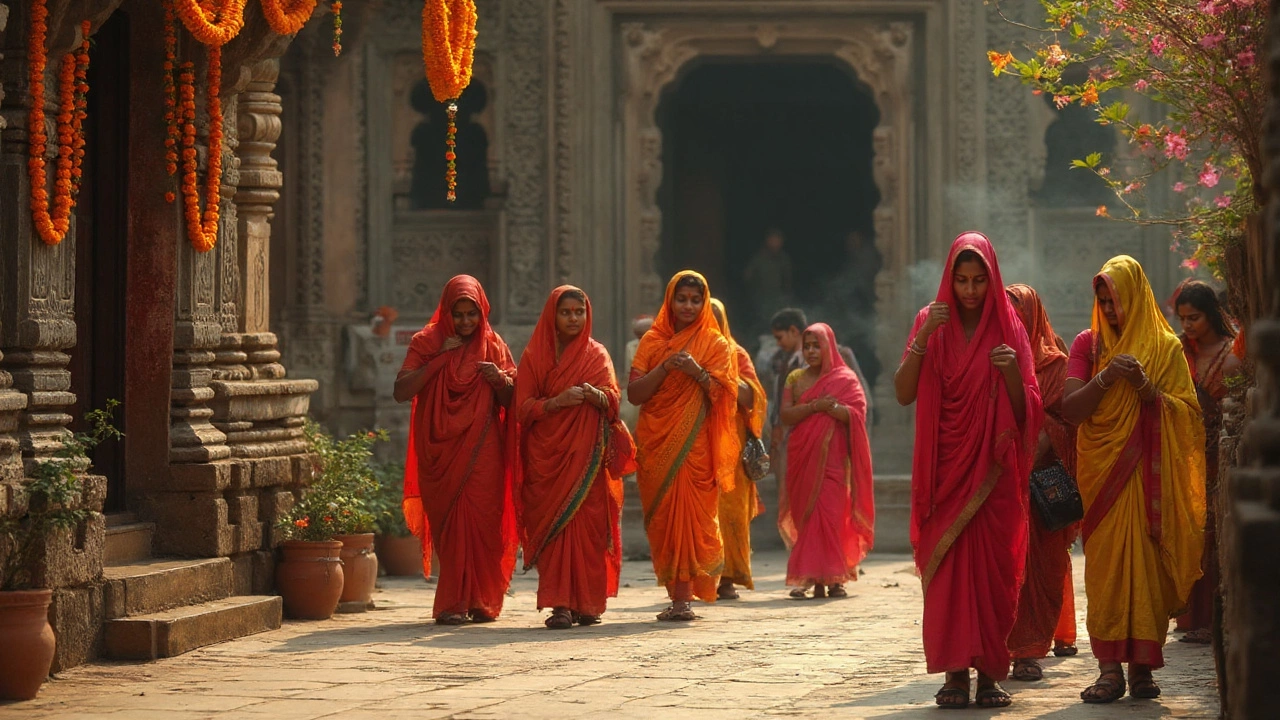Modest Dress Temple: What to Wear When Visiting Indian Temples
When you visit a modest dress temple, a place of worship where cultural and religious norms require covered clothing to show respect. Also known as traditional temple attire, it’s not about restriction—it’s about honoring centuries of spiritual practice. In India, temples aren’t just buildings; they’re living spaces where devotion, community, and custom come together. Wearing the right clothes isn’t optional—it’s part of the experience.
Many first-time visitors assume any clean outfit will do, but that’s not true. At major temples like Tirupati, Varanasi, or Madurai, you’ll see signs, volunteers, or even staff offering shawls or sarongs to those who show up in shorts or sleeveless tops. This isn’t about policing—it’s about preserving sacred space. Temple dress code India, the unwritten rules for clothing in Hindu, Jain, and Sikh places of worship usually means covering shoulders, arms, and legs. For women, that’s often a long skirt or salwar kameez. For men, it’s long pants and a shirt. Bare feet are common too—so skip the socks unless you’re okay with walking on stone floors barefoot.
It’s not just about covering up. The Indian temple etiquette, the set of respectful behaviors expected when entering and moving through temple grounds includes removing shoes before stepping inside, avoiding pointing feet at deities, and keeping your voice low. These aren’t random rules—they’re rooted in the idea that temples are homes of the divine. Even if you’re not religious, showing this respect makes your visit smoother and more meaningful.
You don’t need to buy special clothes. A lightweight cotton scarf works wonders for covering shoulders. A pair of loose pants or a long skirt you already own? Perfect. Many temples near popular tourist spots even rent out simple coverings for a few rupees. But don’t wait until you’re at the gate to figure it out. Plan ahead. Check the temple’s website or ask your taxi driver—they’ve seen it all and will tell you what’s needed.
Some temples, especially in South India, have stricter rules. At the Sabarimala temple, even men must wear black or maroon dhotis. At the Golden Temple in Amritsar, everyone must cover their head—scarves are provided free at the entrance. These aren’t punishments. They’re traditions that connect you to millions who’ve walked the same path before you.
And yes, this applies to all genders. Women aren’t singled out. Men are expected to dress just as respectfully. No tank tops. No swimwear. No revealing shorts. Even in hot weather, it’s better to wear breathable, loose fabric than to risk being turned away or causing offense.
When you dress modestly, you’re not just following rules—you’re stepping into a different rhythm. You move slower. You notice more. You feel the quiet, the scent of incense, the sound of bells. You’re not a tourist anymore. You’re a guest.
Below, you’ll find real stories and practical advice from travelers who’ve been there—what worked, what didn’t, and how to make your temple visit smooth, respectful, and unforgettable.
Temple Dress Code for Girls: What to Wear and What to Avoid in Indian Temples
Curious about what girls should wear in Indian temples? Dive into this detailed guide on temple dress codes, modest outfits, useful tips, and cultural etiquette.
Read more